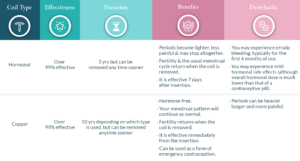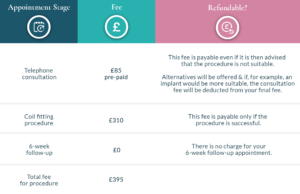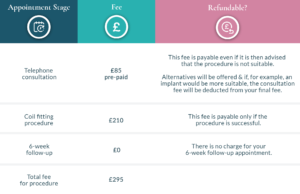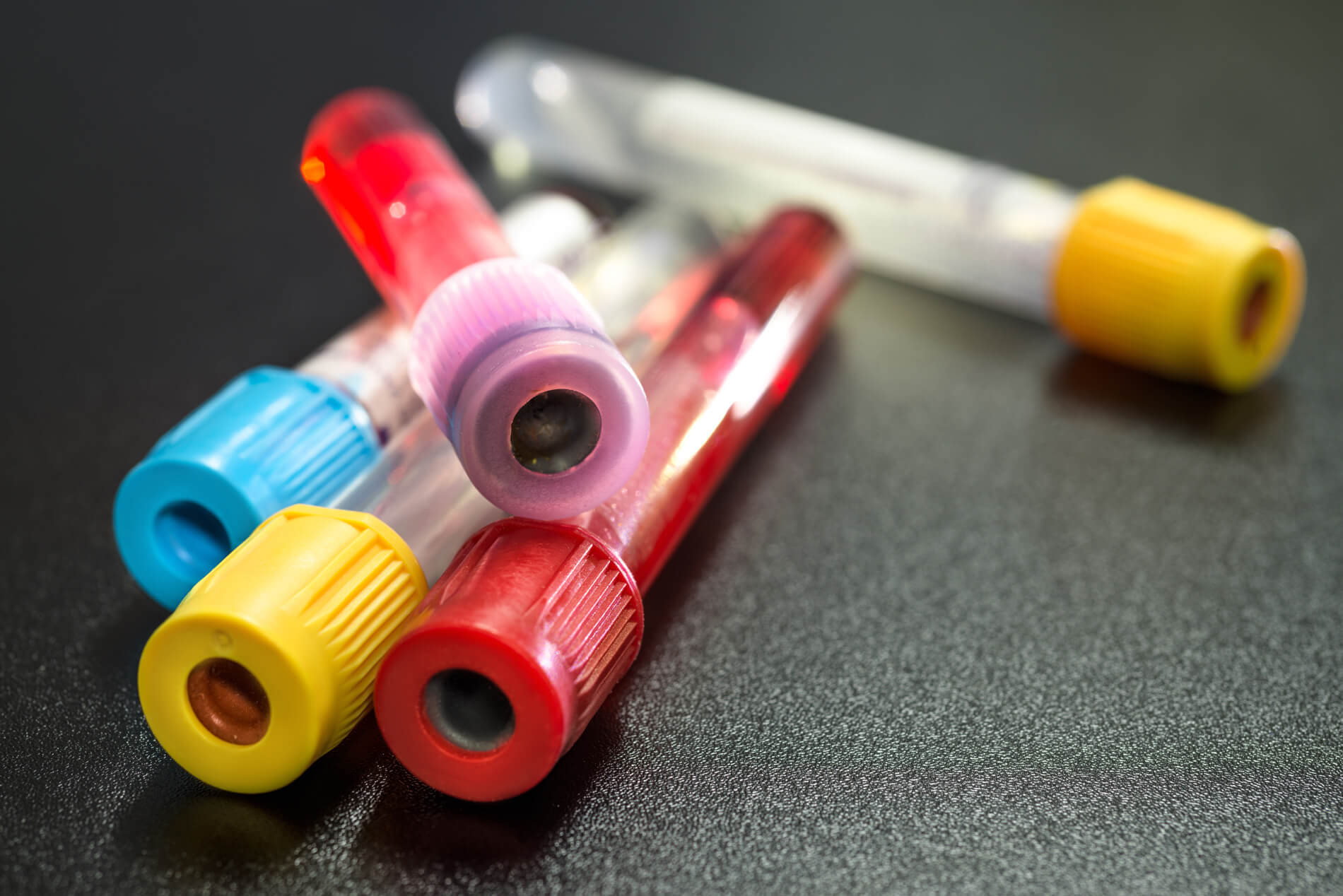Everything you need to know about having a coil (IUD) fitted with us
What is an IUD coil?
A coil is a safe and reliable form of contraception. It is fully and immediately reversible upon removal of the coil.
A coil is a small flexible T-shaped device that is placed inside the womb. Small threads protrude from the cervix (not from the vagina) and these enable the coil to be removed.
There are two types of coils and which is best for you will be discussed in your consultation with our specialist nurse.
Here is a side by side comparison:
Insertion of an IUD coil
A coil is inserted by a trained Specialist Nurse. You will be given a 45-minute telephone/virtual appointment where a full history will be taken and any advice given.
Then a 45-minute appointment will be scheduled for the procedure. During the procedure, it is usual to experience some period-like pain or cramping. This may continue for a few hours during the day of the procedure and may be accompanied by some period-like bleeding.
Please consider taking some paracetamol or ibuprofen about half an hour before your appointment to ease any discomfort. Please also write down and bring the start date of your last period with you to the appointment.
Whilst the procedure is very safe there are some infrequent but important risks about which you should be aware.
Infection
Usually in the first 21 days of insertion. This would cause heavier pain/ bleeding or a temperature after the coil insertion and would require antibiotics.
Expulsion
About 1 in 20 coils fall out – this is not dangerous. We teach women to be able to check for their coil threads to ensure the coil is still in place. A new coil can be inserted if the coil is expelled. Expulsion is most common in the first year and particularly during the first 3 months.
Perforation
A rare occurrence (2 in 1000) is when a small hole is made in the lining of the womb during the coil insertion. This can cause heavier pain after the coil insertion and may necessitate surgical removal.
Ectopic pregnancy
In the very unlikely event of a woman falling pregnant with a coil in place, there is a greater risk of this being an ectopic pregnancy. But this method of contraception is so reliable that falling pregnant in the first place is unlikely.
Cervical Shock: A rare occurrence when intervention to the cervix causes a woman’s blood pressure to drop, resulting in lightheadedness. This is usually reversed by stopping the procedure.
When can a coil be inserted?
A coil can be inserted at any time in the menstrual cycle, provided that you can be certain you are not pregnant.
Please use effective contraception, or do not have sexual intercourse from the first day of your last period, until the fitting.
A negative pregnancy test can only rely upon 3 weeks after unprotected intercourse.
If you would like to use a short-term alternative form of contraception (such as a contraceptive pill) this is also an option.
How often will I need a check-up?
We organise a check-up 6 weeks after insertion to ensure the IUD coil is in place and no infection or issues have arisen. Following this, you will not need a check-up and will be advised on how to feel for threads.
How is an IUD Coil Removed?
Removal of a coil is a quick and safe procedure, some mild period-like pain may occur but would be transient. The coil is removed by gentle traction on the threads.
Can I have a coil removed & a new one immediately fitted?
Yes, you can. You will still need the 45-minute telephone consultation with the specialist nurse beforehand to ensure this method of contraception remains suitable for your circumstances and health history. [Our Coil Replacement Package costs £495 for a hormonal coil and £395 for a copper coil.]
Appointments:
You will have three appointments for a coil fitting as follows:
- 45-minute telephone consultation
- 45-minute procedure
- 15-minute follow-up 6 weeks later
Fees:
Hormonal Coil Insertion
Copper Coil Insertion










I had my 5-year coil inserted about 3 years ago, would it be advisable to remove it before the 5 year ends? Also in the event that I am trying to fall pregnant how long after the removal should I wait to get started trying?
Hi Claire – that will depend a little on your circumstances. Our coil service includes an initial consultation with our specialist nurse who will be able to answer all of those questions for you before you choose whether or not to go ahead.